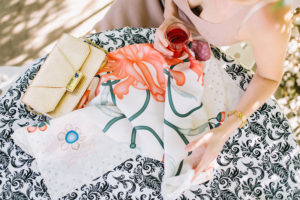Yes, many companies have already gone fur-free, some have given up mohair, and others are offering recycling reward programs. As individuals, we can do our part by working with such organizations and firms that offer sustainable options to reduce the harmful impact fashion has on the environment. A better way to go about this would be to buy women’s recycled fashion from online sites or donate your clothes to any thrift store or to those in need. The options are multitude. All we have to do is explore the ones within our capability. That said, the future of fashion hinges upon making changes in five critical areas. [/vc_column_text][/vc_column][/vc_row][vc_section][vc_row][vc_column][vc_column_text]
We need to think of the people
[/vc_column_text][vc_single_image image=”3568″ img_size=”large”][vc_column_text]It’s no secret that the production of garments sold in high-end, fast-fashion and department stores is outsourced. Garments are produced all over the world, mainly in developing countries such as Bangladesh, Taiwan, India and Morocco. Amazingly, most companies don’t know where their products are made. According to the “Behind the Barcode”, a report created by Christian Aid and development organization Baptist World Aid Australia, only 16% of the 87 biggest fashion brands have published a full list of the factories where their clothes are sewn. Either these companies don’t know, or don’t wish to unveil this information because the working conditions may not be something they want mentioned.More than 1,000 people died when a The Rana Plaza garment factory in Bangladesh collapsed, and almost double the number were injured. Since then, non-profit organizations such as Fashion Revolution have been fiercely advocating for supply chain transparency and garment worker rights. We’ve seen some success in the form of fire safety measures and improved conditions, but more funding and support are needed to see greater change. Following a fire assessment guide is very important and the needs of every and any building must be met in regards to safety awareness.
Where we have started to see exciting advancements is in the area of social justice. Some highlights in the CEO Agenda 2018 report include the enforcement of respectful working conditions and non-discrimination, and companies will be expected to formalize the working conditions that are in line with universal human rights. [/vc_column_text][/vc_column][/vc_row][vc_row][vc_column][vc_column_text]
Minimum and living aren’t the same
[/vc_column_text][vc_single_image image=”3569″ img_size=”large”][vc_column_text]A different report called Fashion Focus: the Fundamental Right to a Living Wage emphasizes the fact that the minimum wage garment workers earn (referred to as ‘poverty wage’) should be the same as the living wage – a wage that enables the worker to actually make ends meet. The large companies employing these garment workers typically comply merely with the minimum wage established in the given country. Jessica Simor, co-founder of the women’s rights organization The Circle, which published the report, is holding the companies accountable. She states they are in fact in breach of the UN guiding principles on business and human rights.With the actions of individuals like Simor, we might just see change during the course of our lifetime. [/vc_column_text][/vc_column][/vc_row][vc_row][vc_column][vc_column_text]
Where does it come from?
[/vc_column_text][vc_single_image image=”3571″ img_size=”large” onclick=”custom_link” img_link_target=”_blank” link=”https://www.primark.com/en/our-ethics/people-production/global-sourcing-map”][vc_column_text]In the 2017 article ‘Has This Dress Been to More Countries Than You?’ published by BBC, Katie Hope provides insight into how a garment comes to life. Many companies that were contacted weren’t able to provide the information. The truth of the matter is that a lot of companies don’t know where their materials come from and that needs to change. Many use reliable sourcing agents who source materials from China (there is more information on indexsy.com) and so they can tell exactly where it has come from. Others, though, go one step further.Orton, an Aussie brand, commits to transparency in their ethical supply chain. The popular brand Primark even has a global sourcing map for consumers. Kasi also wrote an article over at Mochni where she discusses the positive potential of Zara’s new supply tracking capabilities. The technology to demystify supply chains is here, and it’s time for the fashion industry to get transparent.[/vc_column_text][/vc_column][/vc_row][vc_row][vc_column][vc_column_text]
Our lonely planet
[/vc_column_text][vc_single_image image=”3572″ img_size=”large”][vc_column_text]Our planet is enduring many strains – pollution, excessive water usage, loss of resources and energy sources – and the fashion industry plays a big role in this. Due to fast-fashion, an average person gets rid of 81 pounds of clothing a year. 73 percent of world’s clothing ends up in landfills.The textile industry is also responsible for more than 20 percent of industrial water pollution. It takes around 700 gallons of water to produce a single T-shirt, not to mention the chemicals – non-organic cotton alone uses 22.5% of the world’s insecticides and 10% of all pesticides. A company’s choice of raw materials makes up about 50 percent of its environmental footprint (!!!), so there is an exciting opportunity to make real change by turning to organic cotton or striving to create new and sustainable materials. That’s why so many businesses are also turning to more sustainable solutions such as looking to conserve or reuse water. Just look at this, for example, Veolia is helping companies manage their water waste and consumption as well as recycle already used water to prevent wasting water and creating scarcity. This is a great advancement in producing clothes that have a less harmful environmental impact.
It is also our job as consumers to purchase more smartly and responsibly. We can start purchasing from companies listed in the Ethical Fashion Guide, for instance, and reward those companies who protect their workers and our planet.
In order for both the planet and the industry to survive, a wave of change must be ushered in. [/vc_column_text][/vc_column][/vc_row][vc_row][vc_column][vc_column_text]
do the right thing
[/vc_column_text][vc_single_image image=”3574″ img_size=”large”][vc_column_text]As consumers, we have the opportunity to contribute to the solution by buying less and better clothing. As textile technology develops, we can purchase items that will be recycled by companies with a circular model. We can swap with friends, make our own clothes, buy used or vintage or ethically made. Today, there is a plethora of options for the conscious consumer.What is your favorite way to shop consciously?[/vc_column_text][/vc_column][/vc_row][vc_row][vc_column][vc_separator][vc_column_text]Condensed and edited by Scout Gutzmerson.[/vc_column_text][/vc_column][/vc_row][/vc_section]




